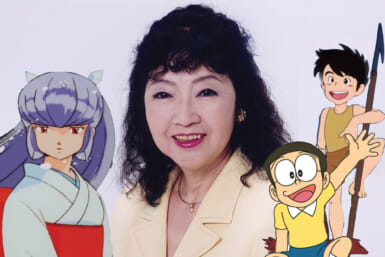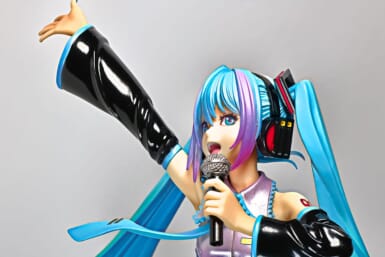Vaccinating your children in Japan
by Leigh Wellsview
No matter where you live, how and when you vaccinate your children can be a topic of much debate. Deciding which of the optional vaccines (or, for that matter, which of the required ones) to have your children take and on what schedule to do so can require hours of reading for the concerned parent trying to weight the pros and cons. Living in another country only adds another wrinkle to this decision making process.
Vaccinations work to protect your body by giving you a small dose of either weakened or killed organisms. Once your body recognizes the ‘disease’, it creates antibodies to fight the vaccine and then remembers that it has done so, creating a resistance to the given disease. Many countries such as the US have requirements for what vaccinations your child must have before entering school, while here in Japan, the vaccination schedule is a little bit less structured, though there is still a recommended schedule for children born in Japan to follow.
Depending on which country you call home and when you plan to return, you may wish to modify the Japanese vaccination schedule in order to align it with that of your home country (see below for general information on vaccine schedules). International doctors throughout Tokyo should be able to provide you with any ‘extra’ vaccines, though don’t expect them to be covered by National Health Insurance.
Two vaccines are part of the Japanese government’s list of free, provided vaccinations—Japanese encephalitis and tuberculosis (BCG)— which don’t show up on American lists. This is because of an increased risk of these diseases in Japan and Asia. Parents should be aware that if your child receives the BCG vaccine, they will test positive for tuberculosis (due to antibodies, not because they have the disease) for around five years following, which can cause bureaucratic difficulties if you move back to an area in the US or otherwise that requires you to test negative for TB before entering school.
Controversy over the use of vaccines has been an issue since their introduction, with parents concerned about some of the ingredients in vaccines, and whether or not vaccines themselves are actually necessary. One of the main points of controversy is the inclusion of thimerosal, which counts 49 percent of its weight in mercury and is used as a preservative in multi-dose vaccines. In North America and Europe, the use of thimerosal has been largely eliminated with the exception of influenza vaccines due to its linkages with autism and brain disorders. However, in Japan, not all vaccines are thimerosal/mercury free and you may be required to pay extra for those that are. The King Clinic is one that imports thimerosal-free vaccines.
When to give your children their vaccinations is also a point of contention. While the US begins at birth, Japan chooses to begin its vaccination schedule after a few months of life and holds off on DPT (now DTaP). This is because of studies that showed that infants who received the DPT vaccine early in life were at a potentially higher risk of dying from SIDS. In the mid 70s, Japan held off on these vaccines until the age of two, and in one year, saw their infant mortality rate drop from 37 DPT-related deaths to just two, and overall, Japan moved from 17 in terms of infant mortality to one. Since the introduction of the safer DTaP version, Japan has moved its DTaP vaccination age from two-years to three-months. (tinyurl.com/2nr265)
Which vaccines to give is also something to consider. For instance, in the US, measles, mumps, and rubella are vaccinated against in one combination MMR vaccine, which is not given in Japan. Instead, in Japan, measles and rubella vaccines are given, and mumps is an optional, on its own, vaccine. This policy is in part because of a paper completed by UK scientist Andrew Wakefield (et al.) and published in The Lancet that contended there was a link between the MMR vaccine, autism, and bowel disorders. Although this claim remains controversial, some still recommend your child receive these three vaccines separately. (tinyurl.com/37xcud)
Of course, these are just a couple of the Japan-specific issues to consider in terms of when, where, and with what you vaccinate your children. For more information on this important issue in general, try Wikipedia: (tinyurl.com/bflx6), the Tokyo With Kids forum (tinyurl.com/3c4wlp), and www.vaccine.org for pro and con information about vaccines. Of course, whether or not you vaccinate your children, and on what schedule is a decision ultimately up to your family and your doctor.
Vaccination schedules for the US, UK, and Japan:
Japan:
3 months: Polio, BCG
6–9 months: DTaP (x3)
9 months–1 year: Polio
1 year: measles, rubella
18 months: DTaP
3–5 years: Japanese encephalitis (x3)
6.5 years: BCG
9 years: Japanese encephalitis
11 years: DT
12.5 years: BCG
14 years: Japanese encephalitis
optional yearly: influenza
optional: variella (chicken pox), mumps, Hepatitis B
Source: Vaccination Liberation tinyurl.com/yvdwnt
US:
At birth: Hepatitis B
1–2 months: Hepatitis B
2 months: DTaP, Hib, Polio, Pneumococcal conjugate (PCV), Rotavirus
4 months: DTaP, Hib, Polio, PCV, Rotavirus
6 months: DTaP, Hib, PCV, Rotavirus
6–18 months: Polio, Hepatitis B
6 months plus: influenza (x two)
12–15 months: Hib, PCV, MMR, Varicella
12–23 months: Hepatitis A
15–18 months: DTaP
18 months plus: Hepatitis A
4–6 years: DTaP, Polio, MMR, Varicella
11–12 years: Tdap, MCV4, HPV (x3, females only)
Source (includes information on each vaccine): The Center for Disease Control and Prevention, tinyurl.com/2on4a2
UK:
2 months: Hib, DTaP, IPV, Hib, PCV
3 months: Hib, DTaP, IPV, Hib. Meningitis C (Men C)
4 months: DTaP, IPV, Hib, Men C, PCV
1 year: Hib, Men C
13 months: MMR, PCV
3 years, 4 months–5 years: DTaP, IPV, MMR
13–18 years: Td, IPV
Source: NHS immunization section: tinyurl.com/3byzlg









